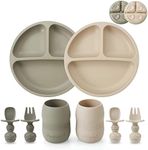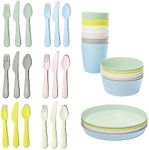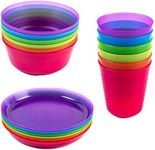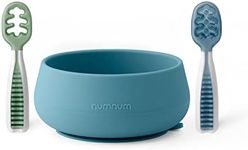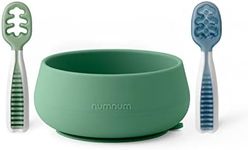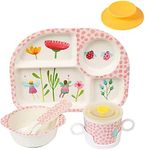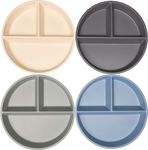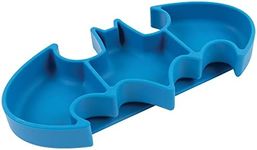Buying Guide for the Best Non Toxic Dinnerware For Kids
Choosing non-toxic dinnerware for kids is an important decision because children are more sensitive to chemicals and toxins that can sometimes be found in plastics, paints, or glazes. The right dinnerware should be safe, durable, easy to clean, and suitable for your child’s age and eating habits. When shopping, focus on materials, safety certifications, and practicality to ensure your child’s health and comfort at mealtime.MaterialThe material of the dinnerware is crucial because it determines both safety and durability. Common options include bamboo, stainless steel, silicone, and certain types of glass or ceramic. Each material has its pros and cons: bamboo is lightweight and biodegradable, stainless steel is durable and unbreakable, silicone is flexible and soft, while glass and ceramic are easy to clean but can break. When choosing, consider your child’s age and how likely they are to drop things—young children may do better with silicone or stainless steel, while older kids can handle bamboo or even tempered glass.
Chemical SafetyChemical safety refers to whether the dinnerware is free from harmful substances like BPA, phthalates, lead, and melamine. These chemicals can leach into food, especially when heated. Look for products labeled as BPA-free, lead-free, and free from other toxins. Certifications from recognized safety organizations can also provide peace of mind. If your child’s dinnerware will be used for hot foods or microwaving, chemical safety becomes even more important, so always check the manufacturer’s claims and certifications.
DurabilityDurability is about how well the dinnerware stands up to drops, throws, and daily use. Kids’ dinnerware should be able to survive being dropped or knocked over without breaking or chipping. Stainless steel and silicone are generally the most durable, while bamboo and certain plastics can crack or break over time. If your child is very young or tends to be rough with their things, prioritize unbreakable materials.
Ease of CleaningEase of cleaning is important for busy parents and for maintaining hygiene. Some materials are dishwasher-safe, while others need to be hand-washed. Silicone, stainless steel, and some bamboo products are usually dishwasher-safe, but always check the label. If you want to save time and ensure thorough cleaning, look for dinnerware that can go in the dishwasher and doesn’t have hard-to-reach crevices.
Age AppropriatenessAge appropriateness means the dinnerware is designed for your child’s developmental stage. For babies and toddlers, look for plates and bowls with suction bases to prevent spills, and utensils with easy-to-grip handles. For older kids, you can choose more standard shapes and sizes. Always consider your child’s ability to handle the dinnerware safely and independently.
Microwave and Freezer SafetyMicrowave and freezer safety refers to whether the dinnerware can be safely used to heat or store food. Not all materials are suitable for the microwave or freezer—some plastics and bamboo can warp or release chemicals when heated, while stainless steel is not microwave-safe. If you plan to reheat food or store leftovers in the same dish, check that the dinnerware is labeled as microwave- and freezer-safe.
